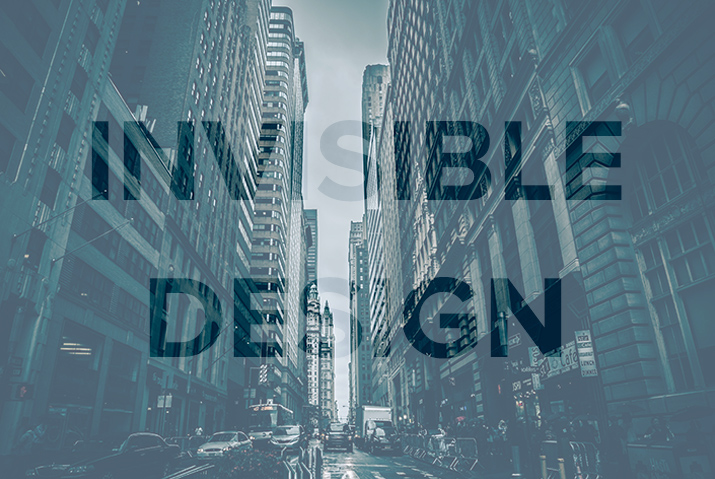Good designs are not just something that the average users look at and say, “Awesome! That’s a really great design!” Good designs are easy to use, read as well as interact with. It makes the users eager to experience as well as engage with your website, physical material or apps, evoking a special emotional response.
You may spend days, months or years on a project but it won’t appear anything spectacular to people outside the design community. This is a great thing. Good designs are somewhat invisible.
Designs are usable, subtle and at times, undefinable as well. To speak simply, good designs are invisible, often. Invisible designs are not about adding layers or hidden meanings to projects but they are about creation of user-oriented projects that look great visually and are functional too.
How can you achieve the invisible design when web designs are a visual tool?
Let me clear this point. Design is visible. There is no argument about that. However, the tools and the techniques that you are using should never be obvious to the users.
Web designs are chiefly about making things look right. The users prefer to engage as well as interact. They need not understand the reason always. That’s invisible design.
Tricks Never Sell Design Projects
The designers often add tricks or embellishments to design to show off their skill. This is one of the biggest mistakes. These techniques are certainly helpful in creating a functional design but they often get in the way of success.
Think of all the design tricks you are employing in your website. Now ask yourself a few questions.
- What am I attempting to accomplish through this strategy?
- Why am I using this strategy?
- Is it contributing to user interaction or emotion?
Asking these questions to yourself will help you to ascertain why you are using a given trick or technique. If you use it just because you are bored or eager to try out something new, it’s time to reconsider your decision.
What Are the Different Types of Invisibility?
While speaking of invisible design, several things will come to your mind. Each type is equally significant and is likely to cast an impact on your work in different ways.
- Invisible notifications or interactions that take place so seamlessly that allows the users to go on with their job without sparing a thought. The alarms and alerts on phone are such an example.
- Invisible aesthetics that creates an emotional connection and bond with the users.
How to Design Something Invisible?
Through research and taking conscious decisions about the things you are communicating, you can add efficiency to invisible design. Let’s see how you can do that; step by step.
Color
Let’s begin with color. Red signifies love but it may also signify war. Green represents nature while purple stands for royalty and wealth. These conventions allow the savvy users decode text and read between lines. It also aids in understanding the invisible. Be careful while selecting colors. This will help users to perform specific actions and create the right feel, harmony as well as balance.
Typeface
Typefaces also tell stories. Serif fonts are formal and are associated with sophistication, tradition as well as high-end values. On the other hand, Sans serif fonts are synonymous with friendliness, informality as well as modernity. A conflict is created if the words in the copy convey a meaning different from the meaning conveyed by the typography. Choose fonts depending upon the meaning you would like to convey through the copy.
Tone of Voice
While interacting, we just don’t listen to the words people say but we also draw meaning from the body language, tone of voice and the pitch. Just because the web gives little space to face to face interaction, you can’t neglect that.
Use a language that communicates the way your users need to feel while they interact with the design. Find out whether it is comical, lighthearted or formal. Also, think of the rhythm of words. Find out how they are sounding when read out loudly.
Remember that to remain completely invisible, your design needs to be perfect. It is not enough to use a simple design but it should come with a purpose too. Avoid over embellishment or adding trendy elements only because you are eager to use them. Design the small pieces with care so that it works seamlessly and design the bigger picture in a way so that it paints a complete image. Don’t think much. At times, simple solutions are the best solutions.
Photo credit: Design Shack




